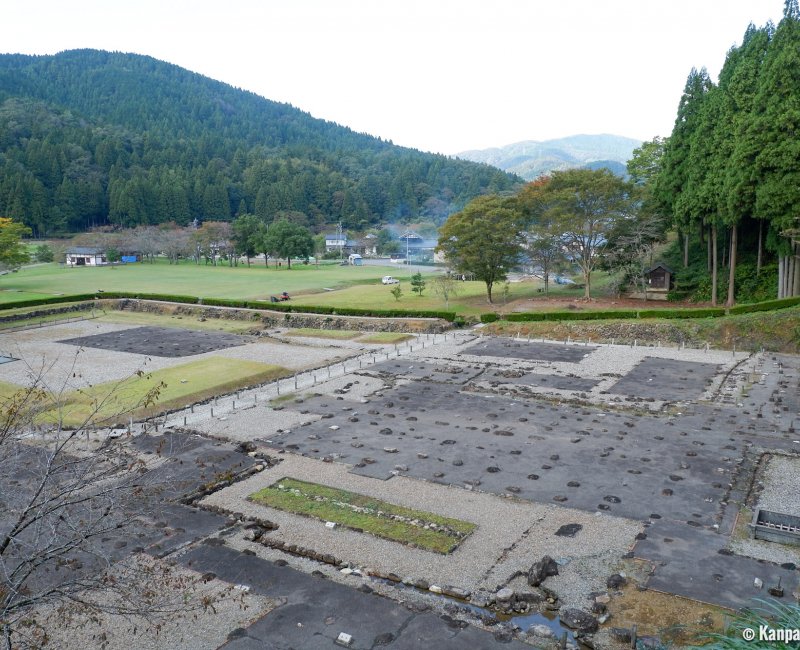Ichijodani Asakura Clan Ruins
Remains of a Lost Castle Town
Ichijodani Asakura Clan Ruins are vestiges of an ancient fortified city, located a dozen kilometers south-east to Fukui City in Japan. The Asakura were a daimyo warlords clan that ruled over the Hokuriku area between 1471 and 1573. Ichijodani castle-town was built and thrived under their authority in the heart of the Echizen province, now the northern part of Fukui prefecture.
Unearthed in 1967, the Ichijōdani Asakura Family Historic Ruins spread on a 2.5km² superficies and are among the largest remains of a former castle 🏯-town in Japan. This characteristic had the ruins receive three national designations:
- Special Historic Site,
- Special Place of Scenic Beauty, and,
- Important Cultural Property.
Ichijjodani's valley is 500 meters wide east to west and about 3 kilometers long north to south. Surrounded by mountains on its eastern, western and southern sides, and closed by a river in the north, the site is an ideal and natural fortified site that warlord Takakage Asakura chose to built his main stronghold during the warring states times of the Sengoku period (1477-1573).
At its apogee, the city was home to more than 10,000 inhabitants and was one of the wealthiest of the country regarding society and culture. Major communication routes (both on water and on land) ensured exchanges with the rest of the province. Ichijodani was an urban fortress, carefully organized and hierarchized according to social ranks and functions (samurai warriors, temple’s monks, merchants and craftsmen) in the same manner as would be cities of the Edo period, carrying on the social classes separation according to the Neo-Confucian philosophy.

Reconstitution of a street of the fortified city
A street of about two hundred meters long was reconstituted to help visitors immerse in past-time atmosphere. Along this avenue, free-access buildings provide a reconstitution of each type of housing, such as a retainer’s residence or a merchant’s house with its adjoining shop. Daily life scenes are also staged inside the houses to better picture how life was at the times.
Moreover, about fifteen Japanese gardens, of which four are major gardens designated Places of Scenic Beauty, have been discovered. They are further proofs of Ichijodani’s importance and of its inhabitants’ refined taste.

A glimpse of the Asakura Clan’s estate
Located on the eastern bank of the river, at the foot of the mountain where the castle was built, the ruins of the Asakuras' "palace" cover a 6,500m² superficies. They were not part of the reconstructed areas, but their urban development is clearly discernible.
The plot is a square piece of land, and while it was located within the ramparts, it was also fortified with earthen walls and moats on three sides (north, west and south), the fourth being naturally protected by the side of the mountain. Two watchtowers were elevated at the north-west and the south-west angles facing the central road, and three bridges crossed the moats to access the palace after passing impressive gates.
The secured residence grounds sheltered about ten buildings of various functions, a large field used for archery training and a majestic garden. Samurai were also taught traditional arts such as tea ceremony, flower arrangement, poetry and theater.

Ichijodani ended in utter defeat
After five generations of Asakura leaders ruling over the Echizen region, Ichijodani castle was attacked in 1573 by an enemy daimyo, the famous Oda Nobunaga. The castle-town was completely burned down and annihilated during the siege. Ichijjodani Asakura would never been rebuilt, and the next ruling lord, Shibata Katsuie chose to settle his headquarters in the center of Fukui City.
Amateurs of Japanese history and feudal era will best enjoy this heritage-oriented site. The ruins are a local pride and become several times a year the stage for historical life-sized reconstitution by volunteers in period costumes. The most interesting is Sengoku Matsuri and its lovely night Mantoya lanterns 🏮 festival, that are held each year at the end of August.

